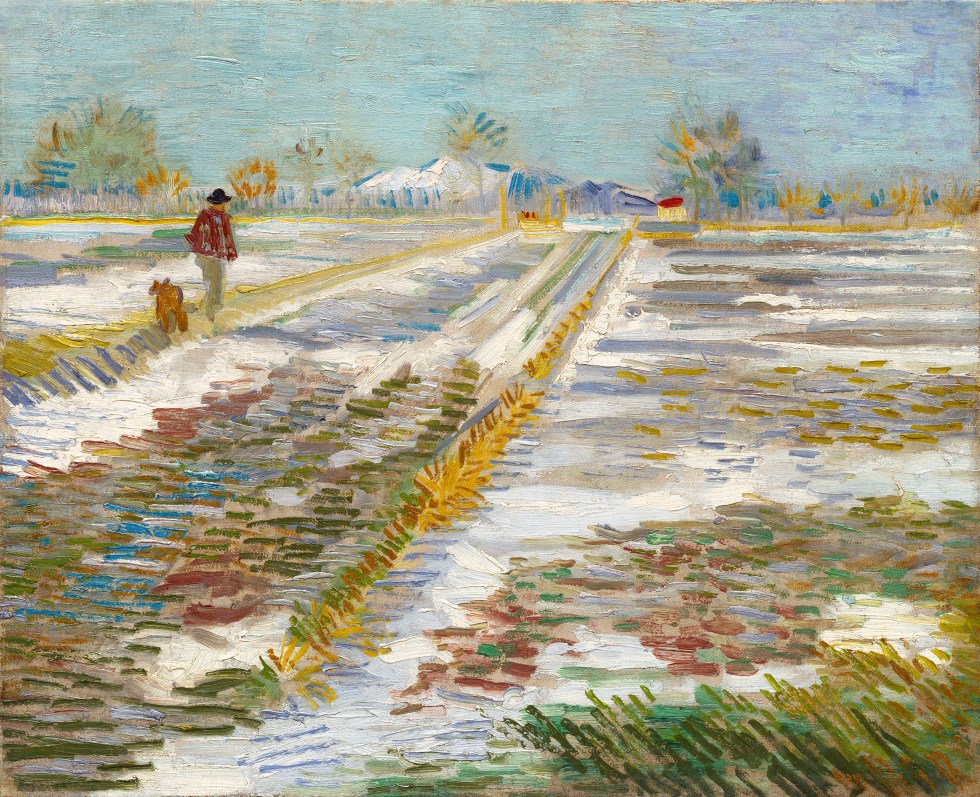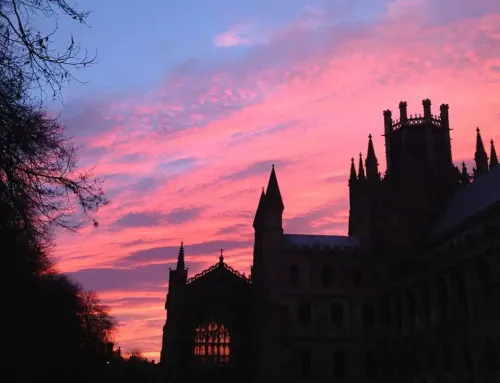When my father was confronted by a menacing wasp in the shed at the back of our house, he experienced the creature as beautiful and later told me with some amazement about his unusual encounter that left both of the sparring partners with tremendous respect for each other.
We noted that in order to perceive the beauty that lies under the surface of things, we must have a distinct Christian virtue: reverence. Reverence allows us to see the truth and goodness connected with the beauty of the world. Recall that this website is dedicated to these three transcendental qualities.
Lacking one element
Beauty, in other words, is not perceived on the surface of things. Beauty, Truth and Goodness radiate through the elements of the world for those who have eyes to see the world as a sacred window to a deeper reality.
For the beauty of anything to strike us deeply, truth and goodness must accompany it as a trinity of qualities. If its beauty lacks one quality or the other, it becomes cheap and superficial. Something may be beautiful without being true or good.
It is, however, only authentically beautiful when it is also true and good. Its beauty varies according to the degrees of truth and goodness. There is a theological significance to the union of these qualities.
Beauty without truth gives us the sparkling facades and obsessions of pop culture. Trends, fashions and current manias may fascinate and engage us for a while but then leave us empty. They have very little meaning and usually have a very short lifespan – until the next obsession hits. That’s because they are deficient in truth.
Beauty without goodness becomes the vicious world of celebrity culture. The jet-setting crowd known as the “beautiful people” are generally the most miserable, angry and immoral creatures in society while being adored for all their superficial beauty. The best plastic surgery money can buy cannot maintain beauty without goodness. It has no substance or staying power.
The beautiful Starry Night
Which brings us back to Vincent Van Gogh’s masterpiece. We haven’t space to do a long analysis of the Starry Night, but let’s examine the outlines of it for a moment to see whether its beauty is skin deep or if it has something of a timeless quality of goodness and truth to it which keeps people paying money to see it every day.
Unity – Starry Night is a singularity within a frame. Although it has many imitations and even a few spoofs, there can be – and only ever will be – one of this particular painting that millions flock to see at the MoMA. While the scenery within the picture is complex, this singular painting is self-contained – unified – within one glorious rectangle of canvas.
Harmony – One feels a sense of peace when contemplating the ecstatic nighttime sky over the French landscape in the region of Provence. Despite the seeming turbulence of the sky, nothing clashes with anything else in the picture (versus the sense of disruption in the Picasso in Part 1). The movement of objects in the heavens doesn’t disturb the small sleepy village below but rather emphasizes the true (and often hidden) grandeur of the temporal sphere in which the villagers carry out their mundane tasks.
Proportion – The elements all work together. There is a delicate balance to the interaction of the twelve celestial objects woven in and around the swirling winds. Notice also the smooth integration of earthly elements (village, land, church) and the deliberate framing of the swirls in the sky enclosed between the cypress tree on the left and the rising mountains and moon on the right. The church steeple in the very center of the piece points heavenward. Deliberate? (For a quick and perceptive analysis of proportion in Starry Night, see this article.)
Wholeness – The picture has deep integrity. If you removed any element from it, the mystery and beauty of the whole would be diminished, if not destroyed. You could sacrifice a brush stroke or two anywhere on the picture or a detail of the sky or village without harming the scene, but the elements themselves form a whole picture. If the Picasso from Part 1 resembles a cut-and-paste collage, Starry Night is like a snapshot: one complete, unified vision captured by the imagination of a great artist.
Radiance – Amazing, vivid colors; exuberant brush strokes; action and stillness combined in a dynamic nighttime scene; an uncanny sense of depth, etc. The picture simply glows and pulsates with life. If the museum allowed you to run your hand over the surface (horror of horrors!) you would feel the paint simply leaping off the canvas expressing itself in three-dimensional texture.
Truly, I could have stayed all day in the MoMa contemplating the scene (but the heathen picture-takers, finally got the better of me.)
Transcendence
One final detail regarding a startling truth discovered in Starry Night’s scene. Some perceptive physicist has studied the painting and found that Van Gogh’s swirling design bears a remarkable similarity to the star-birthing cosmic forces of molecular clouds in space.
Wait! You mean a painting created in 1889 accurately reflects a phenomenon of modern astrophysics? What a surprise.
It appears we have come full circle to the original question: Is beauty really in the eye of the beholder? Our answer must be a definitive no.
Beauty is transcendent. It is beyond us in the sense that its divine source is something eternal and independent of our temporal existence. Yet, beauty also breaks into our natural world and imbues creation and our lives with uplifting dignity, if we have the spiritual sensitivity to perceive it.
Standing in front of Van Gogh’s painting for a few moments to soak in its beauty was a rare gift to my soul. I believe that short encounter actually made me a better person, more attuned to the inherent nobility of the world rather than just its problems.
Beauty’s source lies outside the temporal realm, but because it is also in the world, it can be evaluated objectively by rational beings using the five qualities. We can actually know real beauty when we see it. It’s not like the closed system of the eye-of-the-beholder trap which makes it impossible to determine with accuracy whether anything is beautiful beyond one’s subjective opinion.
Beauty unifies. It connects us in unexpected ways with picture-taking tourists, natural wonders like wasps, and with anything that is good. It even transcends time: we can lose ourselves in authentic experiences of beauty for hours at a time. We can also commune with people long dead who have produced great and wonderful creations of any type throughout the centuries. That’s why we have museums in the first place.
For the perceptive beholder, beauty is not in the individual eye. Rather, it unlocks the larger mystery of the universe and escorts us up to the threshold of eternity.
SOUL WORK
Our analysis of Starry Night is Soul Work in itself, but let me add a few more points for you to ponder at your leisure.
First, examine your individual preferences and tastes to see what measure of beauty they have in them. Use the five qualities as your yardstick. Our purely subjective preferences don’t have to meet those high standards all the time, but we should always strive to develop a higher standard and sense of beauty to avoid the degrading influences of pop culture.
Second, make sure you understand that truth is always united with authentic beauty because humans are rational beings (sometimes) and we need truth to sustain our grasp of the reality of the universe.
Third, do the same analysis of goodness. It is always associated with beauty because goodness has a unifying effect on the overall presentation of anything authentically beautiful.




Leave A Comment